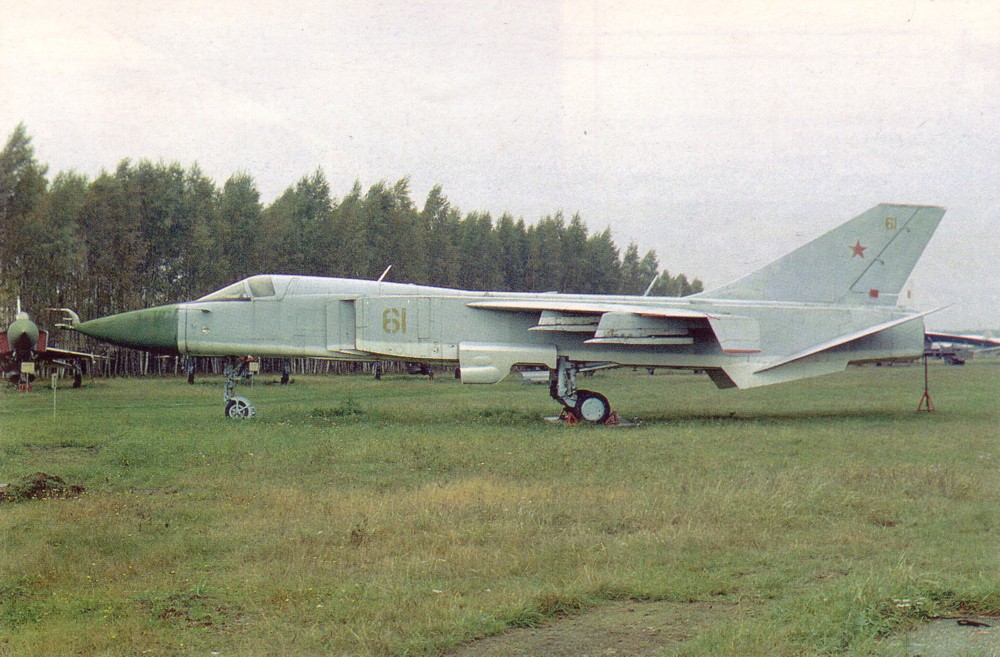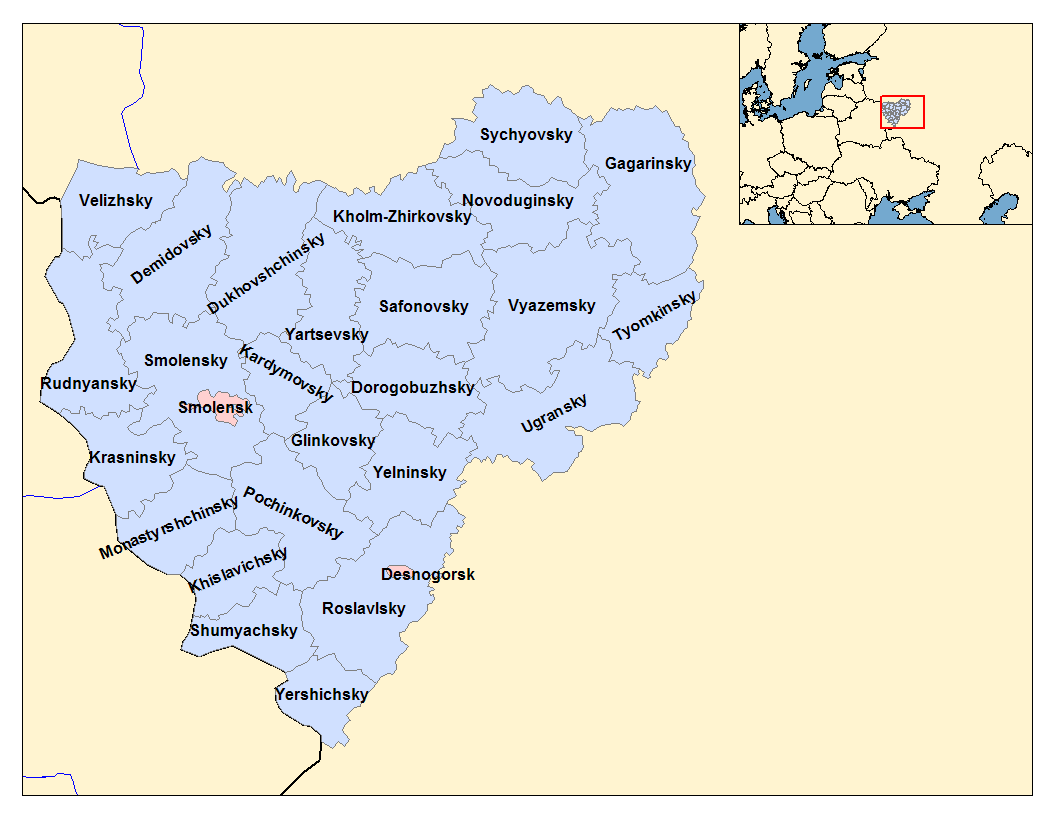|
Shatalovo (air Base)
Shatalovo is an air base in Pochinok, Pochinkovsky District, Smolensk Oblast of the Russian Air Force as part of the 6th Air and Air Defence Forces Army, Western Military District. The base is also known as Pochinok, Satalovo, and Shatoalovo. It is a large hardened air base with pads for 19 bombers and 15 fighters in addition to a small amount of tarmac space. It is a nuclear bomber base (Su-24) according to a Natural Resources Defense Council study. During the 1980s it was one of 17 airfields hosting the Soviet Union's tactical reconnaissance aircraft regiments.STATUS OF SOVIET TACTICAL RECONNAISSANCE FORCES USSR/EASTERN EUROPE/AFGHANISTAN(SANITIZED) March 22, 1984, CIA-RDP84T00491R0001 ... [...More Info...] [...Related Items...] OR: [Wikipedia] [Google] [Baidu] |
Pochinok, Pochinkovsky District, Smolensk Oblast
Pochinok (russian: Почи́нок) is a town and the administrative center of Pochinkovsky District in Smolensk Oblast, Russia, located on the Khmara River (Dnieper's basin) southeast of Smolensk, the administrative center of the oblast. Population: Climate Pochinok has a warm-summer humid continental climate (''Dfb'' in the Köppen climate classification). History Pochinok has been known since 1811 as a village. It belonged to Yelninsky Uyezd of Smolensk Governorate. In 1926, it was granted a town status. In October 1928, Yelninsky Uyezd was abolished and split between Smolensky, Roslavlsky, and Vyazemsky Uyezds. Pochinok was transferred to Smolensky Uyezd. On 12 July 1929, governorates and uyezds were abolished, and Pochinkovsky District with the administrative center in the town of Pochinok was established. The district belonged to Roslavl Okrug of Western Oblast. On August 1, 1930 the okrugs were abolished, and the districts were subordinated directly to the ob ... [...More Info...] [...Related Items...] OR: [Wikipedia] [Google] [Baidu] |
Sukhoi Su-24
The Sukhoi Su-24 ( NATO reporting name: Fencer) is a supersonic, all-weather attack aircraft developed in the Soviet Union. The aircraft has a variable-sweep wing, twin-engines and a side-by-side seating arrangement for its crew of two. It was the first of the USSR's aircraft to carry an integrated digital navigation/attack system. It remains in service with the Russian Air Force, Syrian Air Force, Ukrainian Air Force, Algerian Air Force and various other air forces to which it was exported. Development Background One of the conditions for accepting the Sukhoi Su-7B into service in 1961 was the requirement for Sukhoi to develop an all-weather variant capable of precision air strikes. Preliminary investigations with ''S-28'' and ''S-32'' aircraft revealed that the basic Su-7 design was too small to contain all the avionics required for the mission. OKB-794 (later known as Leninets) was tasked with developing an advanced nav/attack system, codenamed ''Puma'', which would be ... [...More Info...] [...Related Items...] OR: [Wikipedia] [Google] [Baidu] |
Soviet Frontal Aviation
The Soviet Union,. officially the Union of Soviet Socialist Republics. (USSR),. was a List of former transcontinental countries#Since 1700, transcontinental country that spanned much of Eurasia from 1922 to 1991. A flagship communist state, it was nominally a Federation, federal union of Republics of the Soviet Union, fifteen national republics; in practice, both Government of the Soviet Union, its government and Economy of the Soviet Union, its economy were highly Soviet-type economic planning, centralized until its final years. It was a one-party state governed by the Communist Party of the Soviet Union, with the city of Moscow serving as its capital as well as that of its largest and most populous republic: the Russian Soviet Federative Socialist Republic, Russian SFSR. Other major cities included Saint Petersburg, Leningrad (Russian SFSR), Kyiv, Kiev (Ukrainian Soviet Socialist Republic, Ukrainian SSR), Minsk (Byelorussian Soviet Socialist Republic, Byelorussian SSR), Tas ... [...More Info...] [...Related Items...] OR: [Wikipedia] [Google] [Baidu] |
Soviet Long Range Aviation Bases
The Soviet Union,. officially the Union of Soviet Socialist Republics. (USSR),. was a transcontinental country that spanned much of Eurasia from 1922 to 1991. A flagship communist state, it was nominally a federal union of fifteen national republics; in practice, both its government and its economy were highly centralized until its final years. It was a one-party state governed by the Communist Party of the Soviet Union, with the city of Moscow serving as its capital as well as that of its largest and most populous republic: the Russian SFSR. Other major cities included Leningrad (Russian SFSR), Kiev (Ukrainian SSR), Minsk ( Byelorussian SSR), Tashkent (Uzbek SSR), Alma-Ata (Kazakh SSR), and Novosibirsk (Russian SFSR). It was the largest country in the world, covering over and spanning eleven time zones. The country's roots lay in the October Revolution of 1917, when the Bolsheviks, under the leadership of Vladimir Lenin, overthrew the Russian Provisional Government ... [...More Info...] [...Related Items...] OR: [Wikipedia] [Google] [Baidu] |
Antonov An-30
The Antonov An-30 (NATO reporting name: Clank), is a development of the An-24 designed for aerial cartography. Development The first aerial survey version of the Antonov An-24 was designed by the Beriev OKB and designated An-24FK. The FK stood for ''fotokartograficheskiy'' (photo mapping). The prototype was converted from a production An-24A at Beriev's No. 49 construction shop during 1966. The An-24FK made its first flight on 21 August 1967, with state acceptance trials being completed in 1970 and civil certification completed in 1974. Redesignated An-30, production began in 1971 at the Antonov factory. 123 production An-30s were manufactured between 1971 and 1980 in Kiev in two main versions. Total production Design The Antonov An-30 is a derivative of the An-24, fitted with an entirely new fuselage forward of frame 11. The fuselage nose is extensively glazed. Housed within the new nose section are the navigator and precise navigational equipment, including an optical si ... [...More Info...] [...Related Items...] OR: [Wikipedia] [Google] [Baidu] |
Sukhoi Su-17
The Sukhoi Su-17 (''izdeliye'' S-32) is a variable-sweep wing fighter-bomber developed for the Soviet military. Its NATO reporting name is "Fitter". Developed from the Sukhoi Su-7, the Su-17 was the first variable-sweep wing aircraft to enter Soviet service. Two subsequent Sukhoi aircraft, the Su-20 and Su-22, have usually been regarded as variants of the Su-17. The Su-17/20/22 series has had a long career and has been operated by many other air forces of including the Russian Federation, other former Soviet republics, the former Warsaw Pact, countries in the Arab world, Angola and Peru. Development Shortly after the Su-7 fighter-bomber was put into service, the Sukhoi Design Bureau was ordered to develop a deep modernization program for the aircraft in the early 1960s. The program would be aimed primarily at updating on-board avionics and the takeoff/landing performance characteristics. The concept of variable-geometry wings - something gaining wider attention at that tim ... [...More Info...] [...Related Items...] OR: [Wikipedia] [Google] [Baidu] |
Kubinka (air Base)
Kubinka (russian: link=no, Кубинка) is an air base in Moscow Oblast, Russia, located northwest of Kubinka. In close proximity to Moscow, the Kubinka facility showcases the best of the Russian Air Force to the general public. The 82nd aviation detachment (separate) arrived at the base in 1935, joined in 1938 by the 11th and 24th Aviation Regiments. Personnel of these units field-tested the advanced Yak-1 and Lavochkin-Gorbunov-Gudkov LaGG-3, LaGG-3 fighters and defended Moscow during the Second World War. After the war, the base became home to the 324th Svirskaya Fighter Aviation Division from November 1945. In November 1950, the whole 324th Fighter Aviation Division was redeployed to Korea, and the base was taken over by the 9th Fighter Aviation Division from February 1951. Units which have been stationed at Kubinka include: * 237th Centre for Display of Aviation Equipment (237 TsPAT) flying MiG-29E, Sukhoi Su-17, Su-17C, Su-24, Su-25, and Su-27 during the 1990s (with one ... [...More Info...] [...Related Items...] OR: [Wikipedia] [Google] [Baidu] |
Yakovlev Yak-28
The Yakovlev Yak-28 (russian: Яковлев Як-28) is a swept wing, turbojet-powered combat aircraft used by the Soviet Union. Produced initially as a tactical bomber, it was also manufactured in reconnaissance, electronic warfare, interceptor, and trainer versions, known by the NATO reporting names Brewer, Brewer-E, Firebar, and Maestro respectively. Based on the Yak-129 prototype first flown on 5 March 1958, it began to enter service in 1960. Design and development The Yak-28 was firstTaylor 1976, pp. 520–521. seen by the West at the Tushino air show in 1961. Western analysts initially believed it to be a fighter rather than an attack aircraft—and a continuation of the Yak-25M—and it was designated "Flashlight". After its actual role was realized, the Yak-28 bomber series was redesignated "Brewer". The Yak-28 had a large mid-mounted wing, swept at 45 degrees. The tailplane set halfway up the vertical fin (with cutouts to allow rudder movement). Slats were fitted ... [...More Info...] [...Related Items...] OR: [Wikipedia] [Google] [Baidu] |
Mikoyan-Gurevich MiG-25
The Mikoyan-Gurevich MiG-25 (russian: Микоян и Гуревич МиГ-25; NATO reporting name: Foxbat) is a supersonic interceptor and reconnaissance aircraft that is among the fastest military aircraft to enter service. Designed by the Soviet Union's Mikoyan-Gurevich bureau, it is an aircraft built primarily using stainless steel. It was to be the last plane designed by Mikhail Gurevich, before his retirement. The first prototype flew in 1964 and the aircraft entered service in 1970. It has an operational top speed of Mach 2.83. Although its thrust was sufficient to reach Mach 3.2+, its speed was limited to prevent engines from overheating at higher air speeds and possibly damaging them beyond repair."Intelligence: Big-Mouth Belenko" ''Time'', 11 Octobe ... [...More Info...] [...Related Items...] OR: [Wikipedia] [Google] [Baidu] |
Natural Resources Defense Council
The Natural Resources Defense Council (NRDC) is a United States-based 501(c)(3) non-profit international environmental advocacy group, with its headquarters in New York City and offices in Washington D.C., San Francisco, Los Angeles, Chicago, Bozeman, and Beijing. Founded in 1970, as of 2019, the NRDC had over three million members, with online activities nationwide, and a staff of about 700 lawyers, scientists and other policy experts. History The NRDC was founded in 1970.Robert Gottlieb, ''Forcing the Spring: The Transformation of the American Environmental Movement'' (revised ed.: Island Press, 2005), pp. 193–94. Its establishment was partially an outgrowth of the ''Scenic Hudson Preservation Conference v. Federal Power Commission'', the Storm King case. The case centered on Con Ed's plan to build the world's largest hydroelectric facility at Storm King Mountain. The proposed facility would have pumped vast amounts of water from the Hudson River to a reservoir and released ... [...More Info...] [...Related Items...] OR: [Wikipedia] [Google] [Baidu] |
Smolensk Oblast
Smolensk Oblast (russian: Смоле́нская о́бласть, ''Smolenskaya oblast''; informal name — ''Smolenschina'' (russian: Смоле́нщина)) is a federal subject of Russia (an oblast). Its administrative centre is the city of Smolensk. As of the 2010 Census, its population was 985,537. Geography The oblast was founded on 27 September 1937.Исполнительный комитет Смоленского областного совета народных депутатов. Государственный архив Смоленской области. "Административно-территориальное устройство Смоленской области. Справочник", изд. "Московский рабочий", Москва 1981. Стр. 8 It borders Pskov Oblast in the north, Tver Oblast in the northeast, Moscow Oblast in the east, Kaluga Oblast in south, Bryansk Oblast in the southwest, and Mogilev and Vitebsk Oblast ... [...More Info...] [...Related Items...] OR: [Wikipedia] [Google] [Baidu] |
Western Military District
The Western Military District (russian: Западный военный округ, Zapadnyy voyennyy okrug) is a Military districts of Russia, military district of Russia. It is one of the five military districts of the Russian Armed Forces, with its jurisdiction primarily within the western central region of European Russia. The Western Military District was created as part of the 2008 Russian military reform, 2008 military reforms, and founded by Presidential Decree №1144 signed on September 20, 2010, as an amalgamation of the Moscow Military District, Leningrad Military District and Kaliningrad Special Region. The district began operation on October 20, 2010, under the command of Colonel-General Valery Gerasimov. Its current commander is Lieutenant general#Russia, Lieutenant general Roman Berdnikov since October 3, 2022. The Western Military District is the second smallest military district in Russia by geographic size. The district contains 26 federal subjects of Russi ... [...More Info...] [...Related Items...] OR: [Wikipedia] [Google] [Baidu] |




_AN2127866.jpg)
.jpg)


